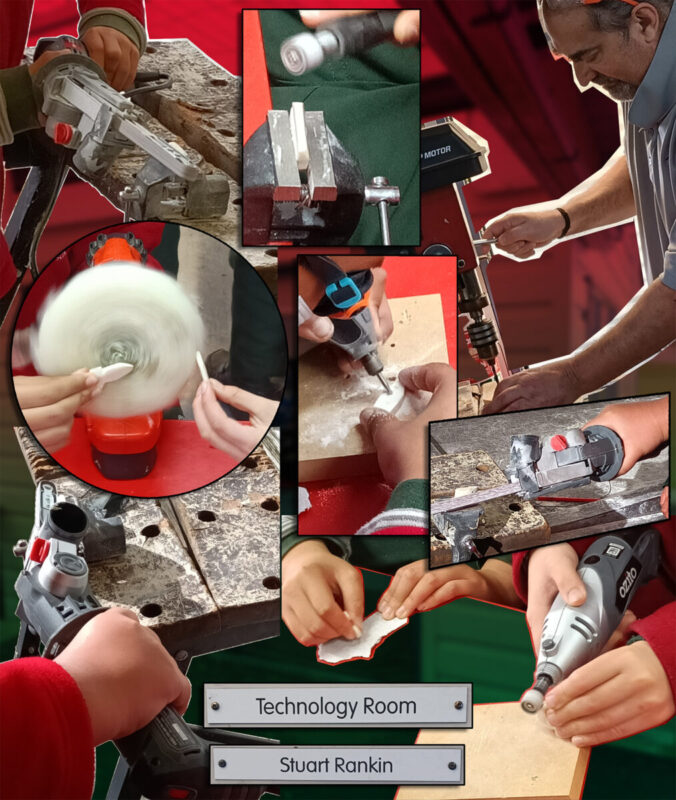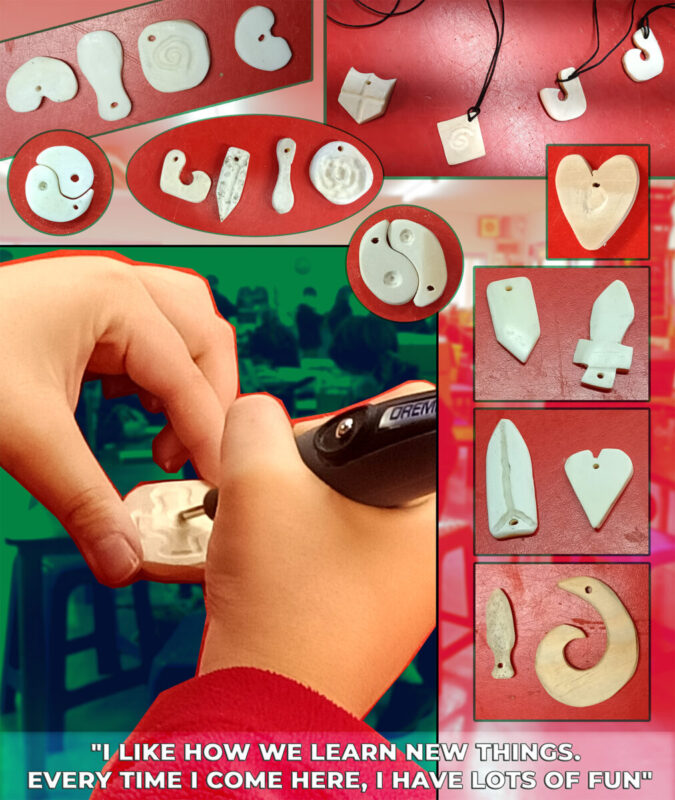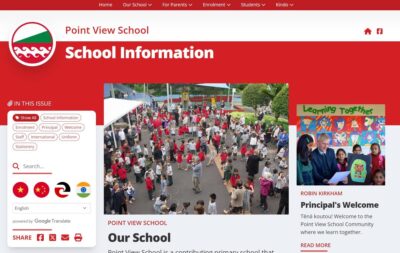A Snapshot of the School
Point View School, located in Botany, Auckland, is a decile 9 contributing primary school that serves students from Years 1 to 6. As of August 2024, the school has a roll of 705 students, with a projected roll of 740 by the end of the year. The school caters to a diverse student population, the majority of whom are Asian (69%), followed by Indian (13%), NZ European (10%) and Māori (2%) students. Around 20% of students are English Language Learners (ELL), reflecting the linguistic diversity that the school works to accommodate (ERO Report, 2018 and updated student population figures for 2024).
The school is committed to fostering academic achievement alongside well-rounded personal development. A notable example is the school’s mindfulness initiative, which was highlighted on 7 Sharp. The program emphasises the development of emotional regulation and mindfulness techniques for students, providing them with tools to manage stress and improve focus. This initiative reflects Point View School’s broader commitment to student well-being, ensuring that learners are equipped with skills not only for academic success but also for personal growth.
In addition to these well-being initiatives, Stuart Rankin, the school’s specialist technology teacher, has been running a popular inter school STEM competition amongst East Auckland schools, which encourages students to engage in hands-on science, technology, engineering, and mathematics projects. The competition is designed to foster creativity, critical thinking, and collaboration, and it has been a key highlight for many students. A video showcasing this competition can be viewed below or watched on Youtube here.
During my visit, I felt welcomed immediately by Adrienne, who helped me figure out the school’s systems, led me to a wonderful morning cup of coffee, and personally took me to the dedicated technology classroom where Stuart Rankin teaches.
Stuart’s Role as a Specialist Technology Teacher
Stuart Rankin, or “Mr. Rankin” to the children, has carved out a unique and impactful role as a specialist technology teacher in this school. His last school, Cosgrove Primary in South Auckland, added the role of specialist IT teacher to his regular classroom duties. Initially trained in England, specialising in physical education, Stuart now leads technology classes with Year 1 to Year 6 students, all 700 of them, at Point View. His teaching is both pragmatic and passion-driven, designed to give students tangible skills, as well as the opportunity to create and reflect on their learning.

Stuart’s teaching approach is highly student-centred, with a focus on hands-on learning and fostering independence in the classroom. During my visit, I saw him working with a Year 5 class on a bone carving project, and he was comfortable giving the students the freedom to learn by using the Dremel, the carving burrs, and the electric polishing motor. His engagement with students was deeply interactive. Stuart often encouraged students to become the experts in their learning, once asking the class, “Who’s the best teacher in the room?” The students started by looking at him, and looking at me as the other adult in the room, before Stuart let them know that they were the best teachers in the room! Stuart’s ability to blend authority with student autonomy gives his classes a dynamic energy. He ensures students feel ownership over their projects, building not only their technical skills but also their confidence.
Stuart’s teaching approach effectively integrates the tuakana-teina model, where more experienced students help those with less experience. This method naturally complements hands-on technology lessons, where peer learning is essential. During a bone carving session, for example, Stuart simply asked, “Who will need help changing the carving?” and followed up with, “D, can you help H___?” This approach encourages students to support each other, making the learning process more collaborative and reinforcing the practical nature of technology education.
I observed several techniques Stuart used to keep his students motivated and engaged. One memorable moment was when he asked, “Who’s bored of me talking?” a self-aware quip that prompted laughter from the students and re-engaged their focus. Stuart’s sense of humour was a recurring theme throughout my observations, with one student remarking, “Mr. Rankin is also very funny.” This blend of humour and focus is key to maintaining the balance between learning and fun in his classroom.
Example of a Lesson: Bone Carving and Environmental Awareness
At the beginning of the day, Stuart’s formative assessment of the students’ work was very clear and practical. He repeated instructions from the previous day: “Use the file to make a round shape, and the sanding machine for square shapes.” He highlighted creative thinking in designs, as he checked in with students: particularly a student who had designed a Neutrality Shield which was rooted in quite deep thinking. The boy explained his idea in such a mature and well informed manner! And he cautioned another student who had been very enthusiastic about polishing his bone: “We don’t want this to get too much thinner…” His deep understanding of safety and technique was evident, as was his care for the environment. Stuart emphasised sustainability, making sure the students understood how to recycle material (like the candle-making remnants in an impromptu side-lesson with four students and myself, where the students were teaching me!), a subtle yet powerful nod to the importance of responsible resource use.

As students worked on their bone carvings, Stuart continuously checked in, both with the group and individuals, asking open-ended questions like, “What does the mask stop us breathing in? What else is bad?” His focus on safety was just as much about understanding as it was about habit-building, with each student learning to properly use the equipment and why it was important. In a class with younger students, this level of attentiveness and care is particularly crucial as it allowed Stuart to give the students independence as they worked on their wood and bone designs.
The balance between structured guidance and independent learning is a hallmark of Stuart’s teaching style. One group of girls I spoke to expressed excitement about learning new things each class. “I like how we learn new things. Every time I come here, I have lots of fun,” one girl shared. Another added, “We get to take a break from school, just having fun.” The students’ sense of enjoyment was palpable. The technology class didn’t feel like “work” to them—it was an opportunity to explore, play, and discover new skills.
Challenges and Opportunities
While Stuart’s passion for teaching technology is clear, he is also candid about the challenges of his role, particularly around CRT scheduling. Logistically, it is very difficult for school leadership to accommodate his request for two consecutive days with each class for his teaching with them for the term. With a larger school, and some terms being shorter, there aren’t enough days for him to be able to do this, highlighting one of the challenges of structuring CRT around specialist subjects. Yet despite these hurdles, Stuart remains committed to delivering a rich and varied technology program, including cooking, candle making, and Lego robotics. See also the 7 Sharp interview when the school were working on designing flags.
He sees the potential in every class, and aims at tailoring lessons to what the students are studying in class. “This year is about local history and growth,” Stuart explained, tying in historical and cultural context to his technology lessons. For example, his bone carving lesson introduced students to the concept of taonga—treasured objects in Māori culture. Stuart has honed his ability to design lessons that cover the curriculum and align with the school’s broader goals, while also keeping the students engaged. He recognises the limitations of his time as being related to one of the positives—he teaches, on average, 12 or so units throughout the year. There are four projects for each senior class, four for each middle school class and four for most of the junior classes—and maximises each session to ensure students take something home. As he put it, “Every kid is going to take away a bone carving.”
Insights from Leadership – Interview with Mrs. Pirie
Andie Pirie, the acting principal, plays a pivotal role in supporting the specialist technology program within the school. In our conversation, she shared how the decision to bring in a specialist technology teacher, Stuart, for CRT coverage came about (although it was before her time she had done a bit of research before our lunch-time talk). Her insights into logistics and scheduling offer valuable lessons for other school leaders considering a similar approach.
A Strategic Decision for Effective CRT Management
The school had been facing challenges in providing adequate coverage for technology education, a common issue in many Aotearoa New Zealand schools. Andie explained that senior leadership recognised that technology wasn’t being taught effectively across classrooms, especially in the primary levels. “The school decided there was a gap,” Andie noted. CRT provided the perfect opportunity to introduce a specialist teacher to bridge this gap while giving classroom teachers the time they needed for planning, assessment, and reporting.
One of the school’s key considerations was ensuring that the CRT program was equitable and impactful across all year levels. As the school grew, Andie and her team developed a system that ensured students from Year 1 through Year 6 had access to specialist technology classes. The aim was not only to provide students with experiences they wouldn’t get in their regular classrooms but also to ensure that all children—no matter their age or ability—had the chance to engage with technology in a meaningful way.
Scheduling and Integration with the Wider School Program
When asked about how the technology program fits within the broader school timetable, Andie was quick to emphasise the importance of careful planning and collaboration. “We try to make Stuart’s program the priority,” she said, “but sometimes school life gets in the way.” Assemblies, visiting authors, swimming lessons, and even public holidays can disrupt the flow of Stuart’s teaching schedule. The key, according to Andie, is flexibility—both on Stuart’s part and on the part of the school.
One of the major challenges for the school has been balancing CRT time across different age groups, particularly given the distinct needs of younger and older students. As the school grew, the increasing demand for CRT necessitated adjustments in how these sessions were scheduled. To address this, the school introduced another reliever to cover CRT for the younger students, which allowed the technology program to focus more on middle and senior year groups. “This year is a bit different,” Andie explained, citing the increase in CRT hours that required further changes to the timetable. A practical solution was implemented, where junior classes attend another specialist program one day and the technology class the next, creating a more balanced schedule that has been well-received by both staff and students.
Responding to Student Needs

Andie’s observations of how students respond to specialist technology classes are telling. “Children are excited when technology class is coming up,” she remarked. “They don’t normally get to do these things in their regular class.” Her comments reflect a broader point that technology education provides opportunities for students to explore new skills, engage in creative problem-solving, and take home something tangible from their learning. For example, when students cook ravioli, borek or apple strudel or they make candles or carve bone necklaces, they get to take those items home—a source of pride and a tangible connection between school and home life.

Andie also noted that some younger students, especially new entrants, can feel anxious in Stuart’s class, not because of the technology itself, but because they aren’t yet familiar with Stuart, who is quite often their first male teacher. “Some of the little ones are a bit anxious, mainly because they don’t know Stuart, but they love the program,” she shared. This emphasises the importance of relationship-building, especially with younger students, and highlights the balance specialist teachers must strike between managing the technical aspects of their lessons and establishing trust with students who may be encountering them for the first time.
Impact of Increased CRT Time and Staffing Adjustments
With the recent increase in CRT hours, schools across New Zealand are facing the challenge of reorganising their timetables to accommodate the additional release time for teachers. Andie outlined how her school has navigated this change by increasing specialist staffing, specifically hiring a new teacher for an Enviro program to share the load. However, this change has impacted Stuart’s availability, as he now has fewer days for his program. Andie spoke candidly about the complexity this adds to timetabling and the difficulty of maintaining a balance between different year groups. “Next term has a big impact on Stuart’s program,” she said, “his increased CRT, public holidays, and a short term.”
Additionally, Andie highlighted the challenge of managing CRT for part-time teachers, which creates inequities in access to specialist programs like Stuart’s. “Some Year 2s are coming to him for 1 day or 0 days,” she explained. The school has tried to address this by “paying it forward,” meaning students who missed out one term will be given more access the next term. However, this is not a perfect solution, and Andie acknowledged that managing this complexity requires ongoing communication with families to explain how CRT coverage works and why some students might have more access to specialist teaching than others during a particular term.
Resourcing and Support for Specialist Technology Teaching
Another crucial component of the program’s success has been resourcing. Andie was clear that ensuring Stuart has the necessary tools and materials to run his classes effectively has been a priority for the school. “He has a dedicated space and a budget each year for resourcing,” she said, adding that Stuart is responsible for managing how that budget is spent. This funding allows him to purchase and maintain the materials needed for projects like bone carving, candle making, cooking, and robotics, including materials and timber.

Professional development is another area Andie emphasised as critical to the success of a specialist teacher. Stuart participates in all school-wide professional learning, and the school encourages him to stay up to date with curriculum changes, attend first aid courses, and even observe other technology teachers to bring fresh ideas back to his own classroom. Andie highlighted the importance of keeping specialist teachers connected to the rest of the staff. “He’s a part of the bigger picture of the school and professional development,” she explained, “good for him to be aware of what is happening with the curriculum refresh.”
Advice for Other School Leaders
Andie’s final message for other school leaders considering a specialist technology teacher for CRT coverage was clear: clarity of roles and communication are essential. “The teachers, whilst they’re very happy that their children are going to experience that, should also take an interest in what their children are doing with Stuart,” she said. Her point underscores that while CRT is important for giving teachers planning time, it’s equally important that classroom teachers stay connected to the specialist programs their students are engaging with.
Resourcing is another key factor, and Andie advises other schools to ensure they have a real budget consideration for specialist programs. The financial and time commitments required to run a successful program are significant but worth the investment if done right. Finally, she noted that equity across all year levels is crucial—ensuring that specialist teachers, like Stuart, are willing and able to teach students of all ages, adapting their programs to meet the developmental needs of younger children while still challenging older ones.
Key Takeaways for School Leaders
If you are considering hiring a specialist teacher for your school to ensure curriculum coverage and to cover the increased governmental requirements for CRT allocation, here is a summary of the key messages. What are the most important considerations for a school?
- Integrating Technology: A specialist technology teacher can enhance students’ engagement with the curriculum through hands-on, real-life applications.
- Planning and Collaboration: Regular communication between the specialist and classroom teachers is essential for aligning the technology program with the broader school curriculum.
- Resourcing: Adequate funding and resources are crucial for a successful technology program, especially in high-decile schools where grants might be harder to secure.
- Equity in Scheduling: Ensure that all age groups receive equitable access to specialist technology lessons, even when timetabling is tight.
- CRT and Specialist Teaching: The increase in CRT can be effectively managed by employing specialist teachers in areas like technology and ensuring these staff members are fully integrated into the staff team.


